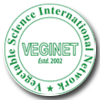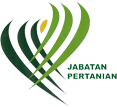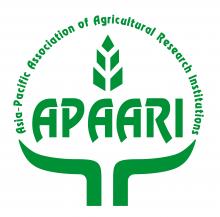MALAYSIA AT A GLANCE
COUNTRY
The federation of Malaysia comprises Peninsular Malaysia, which is made up of 11 states, three Federal Territories as well as the states of Sabah and Sarawak situated in Borneo.
CAPITAL CITY
Kuala Lumpur
GEOGRAPHICAL LOCATION
Lying 2º to 7º north of the Equator, Peninsular Malaysia is separated from Sabah and Sarawak by the South China Sea. The Peninsular shares a common border with Thailand in the north, while its southern neighbour is Singapore. Sabah and Sarawak share a common border with Indonesia while Sarawak also shares a border with Brunei Darussalam.
AREA
329,758 sq km
POPULATION
28 million PEOPLE Malays make up about 57% of the population, with Chinese, Indians and other ethnic groups making up the rest.
LANGUAGE
Bahasa Malaysia (Malay) is the national language but English is widely spoken. Malaysians also speak various languages and dialects.
RELIGION
Islam is the official religion but all other religions are practised freely.
GOVERNMENT
Malaysia practices parliamentary democracy and constitutional monarchy. The Head of State is the Yang di-Pertuan Agong and the Head of Government is the Prime Minister. The country has a bicameral legislative system.
CLIMATE
Malaysia has a tropical climate and the weather is warm all year round. Temperatures range from 21ºC to 32ºC and the annual rainfall varies from 2,000 mm to 2,500 mm.
ECONOMIC PROFILE
Manufacturing constitutes the largest component of Malaysia’s economy while tourism and primary commodities such as petroleum, palm oil, natural rubber and timber are major contributors to its economy.
ENTRY REQUIREMENTS
Visitors must be in possession of a valid passport or travel document with a minimum validity of six months beyond the intended visiting period. Citizens of most countries do not require visas for social or business visits. For further information, please visit or call the nearest Malaysian diplomatic mission or Tourism Malaysia office.
CURRENCY
The unit of currency is the Malaysian Ringgit, which is denoted as RM. Foreign currencies can be converted at banks and money changers.
BANKING HOURS
In most states, banks are open from Monday to Friday from 9.15 am to 4.30 pm. In Kelantan and Terengganu, banks are closed on Friday and Saturday. Check the websites of the relevant banks for details on operating hours and rest days. Online banking services are available.
POST OFFICES
Post offices are open from 8.30 am to 5.00 pm daily except on Sunday and public holidays. They are open for half–a-day on Saturday (until 1.00 pm). Post offices that are located in shopping malls have extended operating hours. In the states of Johor, Kedah, Kelantan and Terengganu, post offices are closed on Friday and Saturday.
WORKING DAYS
Most states observe Monday to Friday as working days while Saturday and Sunday are rest days. In the states of Johor, Kedah, Kelantan and Terengganu, working days are from Sunday to Thursday. Friday and Saturday are observed as rest days. This applies to government offices and many private establishments.
TIME
The standard Malaysian time is eight hours ahead of GMT and 16 hours ahead of the U.S. Pacific Standard Time.
ELECTRICITY
The voltage used throughout Malaysia is 220 - 240 volts AC, at 50 cycles per second. Standard 3-pin square plugs and sockets are used.
MEASUREMENT SYSTEM
Malaysia uses the metric system.
TELECOMMUNICATIONS
Malaysia is linked nationally and internationally by telephone, facsimile and via the Internet. Most hotels provide International Direct Dial (IDD) telephone services and Wi-fi Internet connection.
GETTING TO MALAYSIA
The main gateway to Malaysia is through the Kuala Lumpur International Airport (KLIA) in Sepang. It is located about 50 km south of Kuala Lumpur. Over 40 international airlines fly into the country while the national carrier, Malaysia Airlines, has a global network that spans six continents. The airline is a full-fledged member of oneworld, one of the world’s top three airline alliances. The national carrier is complemented by its subsidiary, Firefly and the budget airline, AirAsia. The new KLIA 2, situated about 1.5 km away from the main terminal of KLIA, is the world’s largest purpose-built terminal dedicated to low-cost carriers. Airlines that operate from KLIA2 include AirAsia, AirAsia X and Malindo Air. Other major international airports that serve as entry points are situated in Penang, Johor Bahru, Kuching, Kota Kinabalu and the island of Langkawi. Themain entry point to Malaysia by sea is Port Klang, about 50 km away from Kuala Lumpur. Malaysia is also accessible by rail and road from Singapore and Thailand.
GETTING AROUND
Malaysia has excellent domestic air links serviced by Malaysia Airlines as well as carriers such as AirAsia and Firefly. The country has a well-developed and efficient public transportation system served by buses, taxis as well as trains. GrabCar and Uber services are available in Malaysia.
ACCOMMODATION
Malaysia has a wide range of accommodation with competitive rates. International star-rated hotels, boutique hotels, beach resorts, chalets, youth hostels and timeshare apartments are among the types of accommodation available













